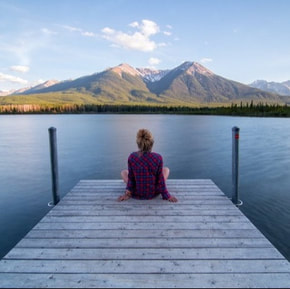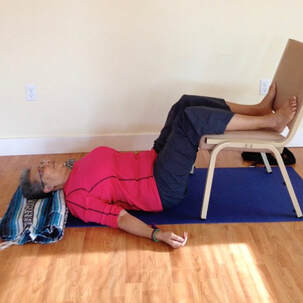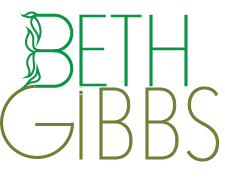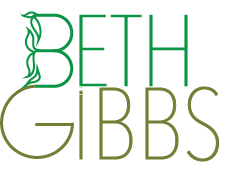ENLIGHTEN UP! a blogSelf-awareness stories: lighting our way to clarity, contentment and resilience in a complicated world.
|
 What is relaxation? It is NOT collapsing on the couch at the end of the day with your smartphone or iPad. We all do this from time to time and sometimes more times that we should. Oops, did I just ‘should on us? Well, it is a habit we need to watch but like eating ice cream for breakfast, this is OK in moderation. Typically, we think of being relaxed as a state where we don’t have a care in the world; we exist in blissful serenity ‘in the moment.’ You’re engrossed in a hobby you are passionate about. Or you’re on vacation, sitting by a lake lost in the stillness of the water, skiing down a mountain feeling the wind on your face, or hiking up one totally merged with nature. In order to consciously and consistently practice relaxation outside of those wonderful experiences, it helps to have a deeper understanding of relaxation and how you can employ it amid the work, trials and tribulations of your regular daily life. Ann Lamott describes the process this way, Almost everything will work again if you unplug it for a few minutes...Including you. Here are two ways to think about relaxation. Basic relaxation is a physiological process and an emotional state in which stress and difficult emotions such as anger, anxiety, or fear are reduced. Science calls this the Relaxation Response. It’s your ability to use your mind/body connection to help your muscles and organs slow down and increase blood flow to the brain. The other way to think about relaxation comes from the yoga tradition. It’s called a relaxed state of awareness. It includes all the elements of basic relaxation but adds another concept; the idea that while in a relaxed state you can also be totally awake and aware of everything that is going on around you and within you. For at least 10 to 15 minutes after every yoga class, I do a guided practice for students to experience a relaxed state of awareness. After one class a woman came up to ask me to explain what had happened to her during the practice. I asked her to tell me what she experienced. She said she thought she had fallen asleep but she knew that couldn’t be true because she heard my voice and was aware of the noises in the room. She said she had never felt anything like that before. I explained that she had experienced a relaxed state of awareness. She told me she’d never thought about relaxation in that way. I like to think she had an Aha! moment. When you are able to achieve a relaxed state of awareness during your waking daily activities, you are more likely to respond calmly and appropriately to your situation instead of reacting in ways that may not be in your short or long-term interests. The ability to relax, however you choose to understand it, is a vital aspect of self-care. It’s a skill. It can be learned. So, why don’t more of us develop a consistent relaxation practice? Here are three reasons.
Finding a way to relax is especially important under those three conditions or when you find yourself in everyday situations that cause you to lose ease in the body and peace in the mind. Here are two techniques to try. Relaxation Breath One of the most accessible go-to breath practices is Relaxation Breath. This breath technique does four things at the same time. It:
Instructions
Playing soothing music in the background is an option for your practice and if you practice regularly, you will be able to use this technique in situations when you must stand and keep your eyes open. Note: If you are one of the 15% of folks who encounter ‘Relaxation-Induced Anxiety,’ you may find this technique helpful and less anxiety producing because you can do it seated or standing and you can keep your eyes open. Here’s one more technique to try. I start my yoga classes with this and I do it myself most mornings.  Props: a sturdy chair, a pillow or folded blanket for the head, a timer and a music source (optional). Instructions
Variation: If getting up and down on the floor is difficult try this in bed with your legs on a stack of pillows. This can also be done sitting comfortably in a chair with your feet on the floor or on footrests if you are using a wheelchair. Find a relaxation practice that works for you to help you optimize your stress hardiness.
1 Comment
Ed savage
1/5/2024 03:33:29 pm
I enjoy that half-bconscious state in occasion, but didn't think about inducing it . Creative newsletter!
Reply
Your comment will be posted after it is approved.
Leave a Reply. |
Archives
July 2024
AuthorBETH GIBBS started her yoga practice in 1968, four months after her son was born and she’s been practicing ever since. She currently teaches all levels therapeutic yoga classes for adults, and specialty classes for seniors in the Hartford, Connecticut area. Beth is a certified yoga therapist through the International Association of Yoga Therapists and is guest faculty at the Kripalu School of Integrative Yoga Therapy. She writes for the blogs, Yoga for Healthy Aging, and Accessible Yoga. Her master’s degree from Lesley University in Cambridge, MA is in Yoga Therapy and Mind/Body Health. Categories |
|
|
Enlighten Up! a Blog
|
Copyright © 2023 Beth Gibbs

 RSS Feed
RSS Feed
